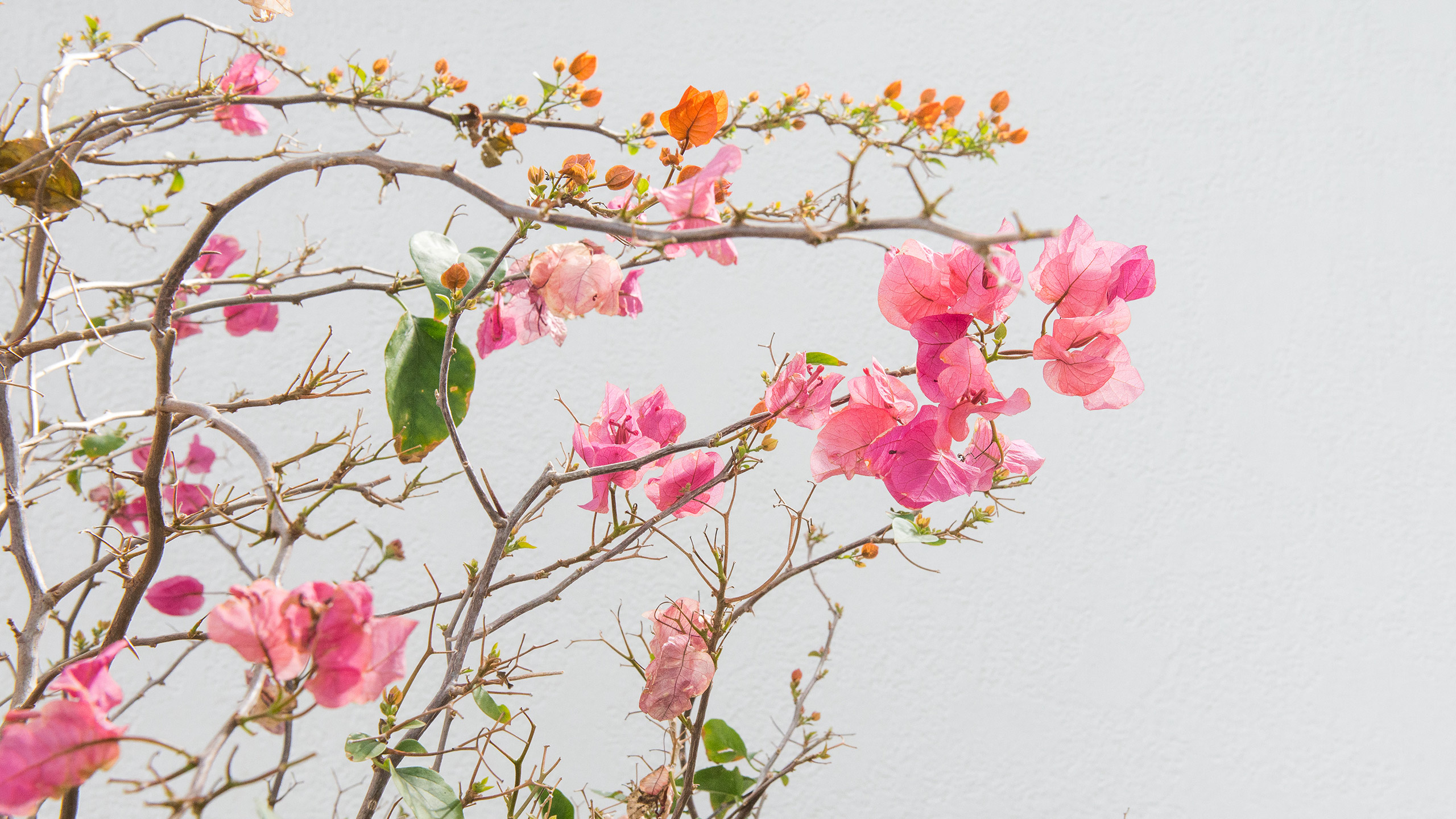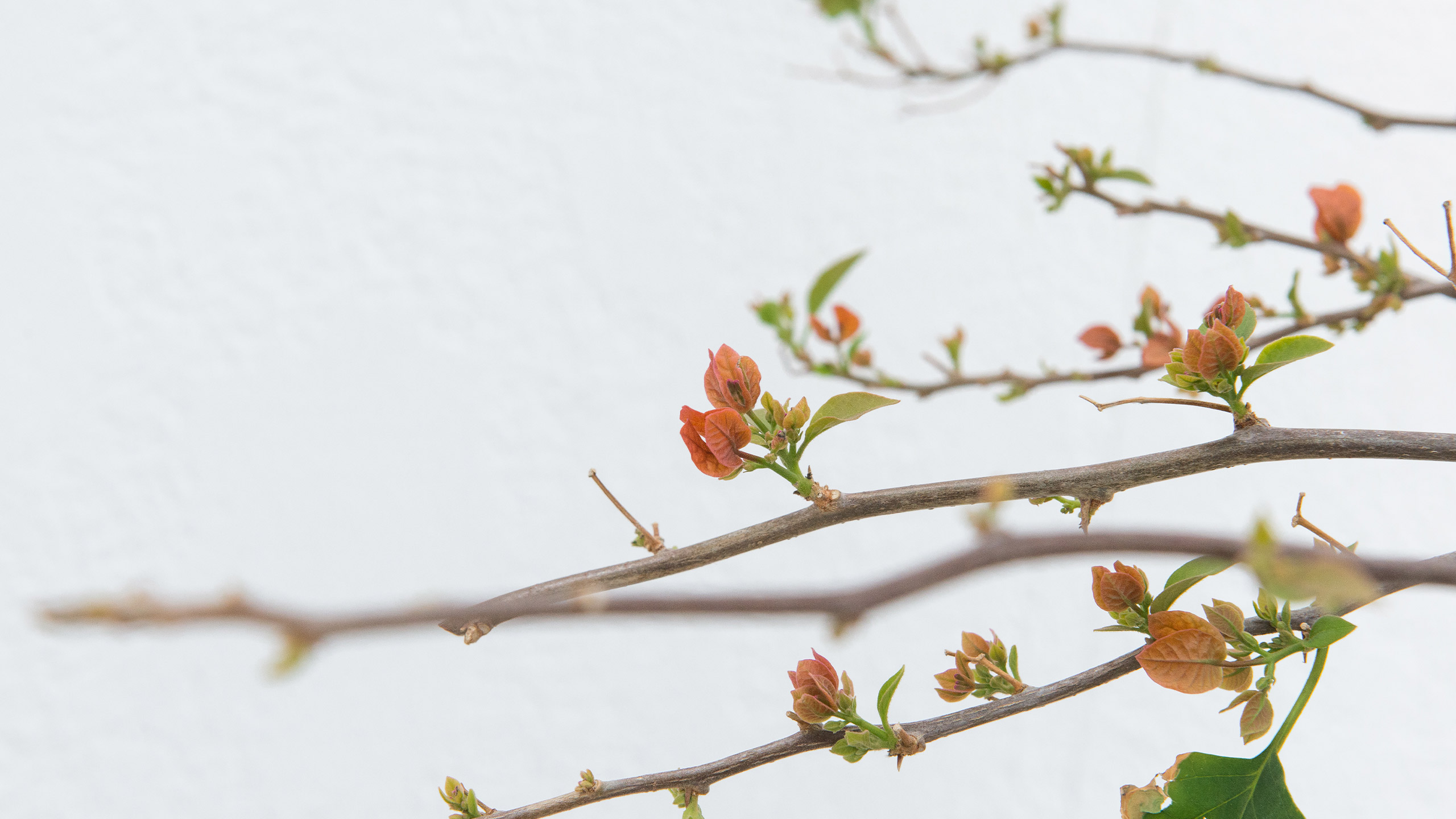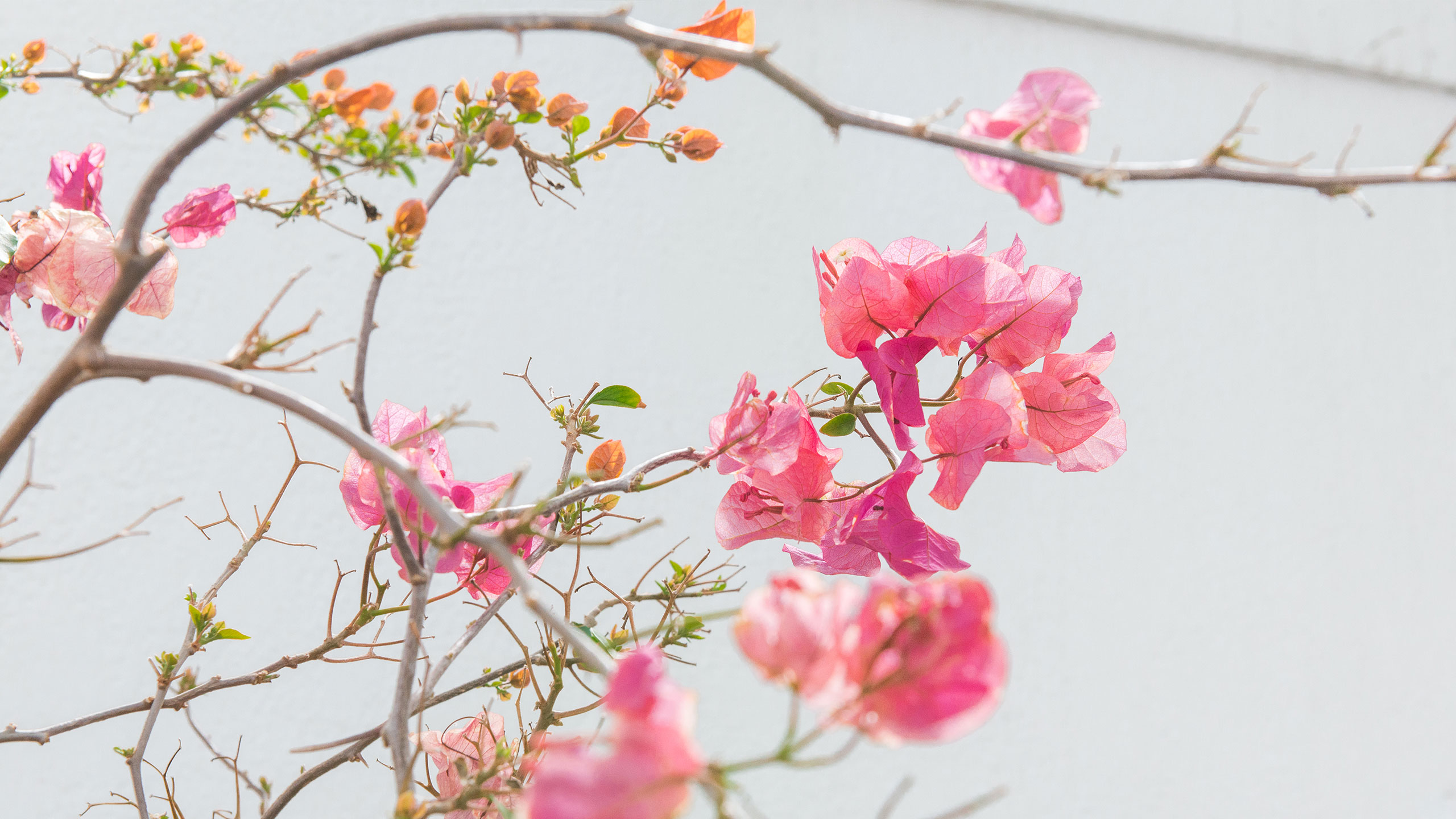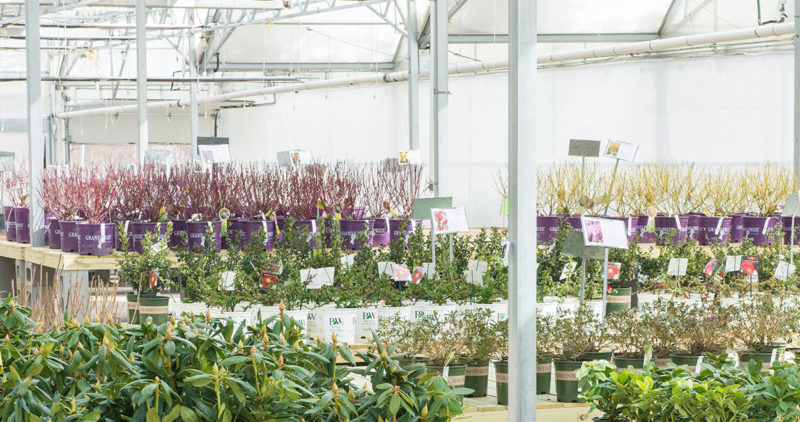
As we all look forward to spring, there’s probably no one more anxious for the return of sun and warmer temperatures than the tropical plants we all brought inside from the patio last fall. Sun-lovers – like hibiscus, palm, bougainvillea, and croton – can tolerate a few months of being indoors where the light is low and the humidity lower. But by March, your tropical patio plants may be feeling a little stressed and asking “Can I go back outside yet?” Even houseplants that stay inside year-round are feeling the effects of shorter days and long cloudy stretches. Here we translate a few late-winter messages your plant may be sending and suggest ways you can make indoor life better until the days get longer and the sun-lovers can head back outdoors again.

Is it dark in here?
Many of our favorite patio plants thrive in bright light – even full sun – when they’re outdoors. This is especially true of flowering plants like oleander, citrus, and lantana. Indoors, we try to provide as much light as we can, but no matter what window we set our plants next to, indoor light really can’t compare to being outside. One way your plant may be trying to tell you it needs more light is by stretching – which is like growing, but not in a healthy way. When a plant stretches, the internodes – the spaces along the stem between the growing points – will lengthen, leading to big gaps in the foliage. A light-deprived plant may also lean heavily toward a nearby window. Variegated ginger plants are a great example of this. They’ll stretch, lean, and fan out their leaves toward the nearest window, capturing every bit of light they can. Brightly colored plants – like crotons – may respond to low light by darkening and losing their vivid colors too.
If you haven’t done so already, move any plants that are showing these signals closer to a south or a west window to give them more direct sun. If one side of the plant starts to look thin, try turning it every couple of weeks to let both sides of the plant face the light. Plant Care team member Woody Wood says you can also provide supplemental light with a fluorescent light bulb mounted in a shop fixture or a clamp-style spotlight. Don’t worry about finding a specialized “grow” light for your plants. Woody says that as long as there’s some light coming in from outside, your plant may just need a little extra light to get through until spring, and regular fluorescent bulbs will do just fine.

No, thanks – I’ve had enough.
As plant parents, we may reach for the watering can as soon as our plant looks a little under the weather but in reality, overwatering causes more plant fails than under-watering does. For most plants, lower indoor light leads to a diminished need for water compared to when they’re outdoors – or even when they’re still indoors but enjoying the longer summer days. So, as strange as it may seem, we should let the top inch or so of potting mix get pretty dry before giving most of our tropical patio plants a thorough drink during the winter. How will your plant tell you it really can’t handle another drop? The foliage may droop – like it’s wilting from thirst – but the potting mix is still wet. The stems or leaves may develop black spots from bacterial growth. Or, you may see little dark gnats flying just above the potting mix – more on that in a bit. If your plant shows these signs, consider moving it to a location with more light. If the container has drain holes, make sure they’re draining adequately. You can also poke a chopstick or a slender dowel rod into the potting mix in a few places to allow more air to reach the roots. And above all, let the top of the mix dry out again before the next watering.

Help – I’ve been invaded!
Another way your plant may be telling you it’s suffering from late-winter stress is by catching a bug. Not a flu bug – an actual bug. Insects like aphids, whitefly, and mealybug are around all the time, and usually a healthy plant can fend them off. But, when a plant is a little stressed, pests can get a better foothold and become noticeable. Greenhouse team member Erica Tirendi says that a simple shower is one of the best ways to keep insect pests from getting out of hand. Bring the plant to the sink or tub and direct a strong stream of water over the foliage, tilting the plant so the water doesn’t splash the soil or flood it. Gently rubbing the leaves under the running water will help too. For mealybug or scale insects, Woody Wood from our Plant Care team recommends cleaning them off with cotton swabs dipped in a 50% solution of rubbing alcohol and water. Then if you need to, you can also follow-up with a spray of insecticidal soap or a product with neem oil in it. Or you can apply a systemic granular insecticide to the soil – this product is drawn up into the plant and protects it from biting insects from the inside out. Aphids, whitefly, and spider mite populations can be controlled with a shower, the spray, or the systemic insecticide too.
So, although plants are pretty quiet, they do have ways of telling you they’re a little unhappy – you just have to learn their language. If you’re not sure what your plant is trying to tell you, come see us – we’ll be glad to help figure it out. More than likely, your plant just wants spring to get here faster – a sentiment we can all relate to.


